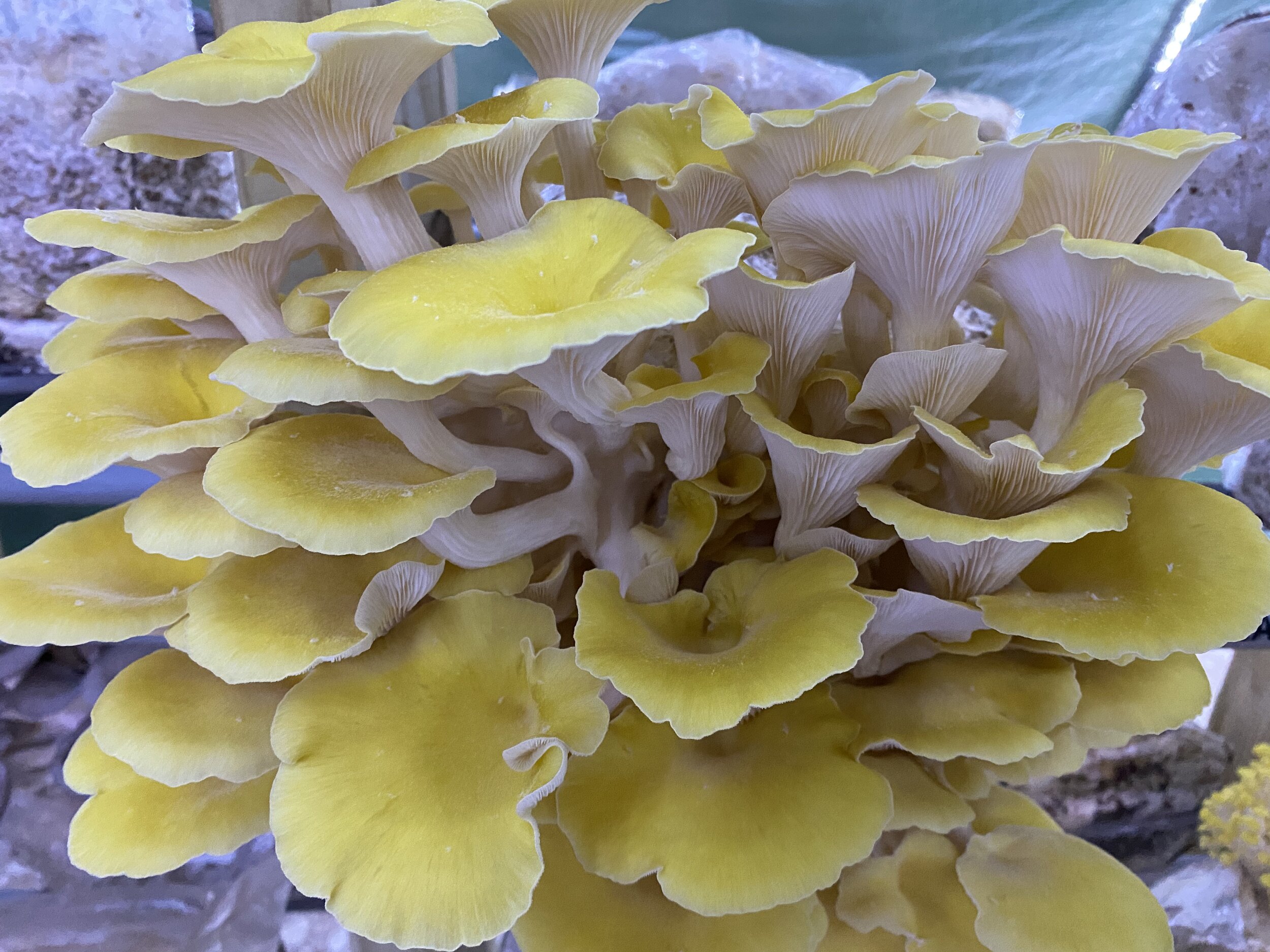Golden Oysters
Yellow oyster mushrooms are small to medium in size with caps averaging 2-6 centimeters in diameter and are attached to a short or nonexistent stem. The thin, dry, smooth caps are daffodil yellow, semi-circular, and look like small petals clustered and layered into a small bouquet. When young, the caps are flat, and with age, they begin to curl and become convex with wavy edges. Underneath the caps, there are many soft, short, white gills that connect to an ivory white, small stem. Yellow oyster mushrooms have a fruity aroma reminiscent of an aged red wine and are velvety, crisp, and chewy. When raw, Yellow oyster mushrooms can be somewhat bitter, but when cooked, they developed a balanced, nutty flavor similar to the flavor of cashews.
Yellow oyster mushrooms are small to medium in size with caps averaging 2-6 centimeters in diameter and are attached to a short or nonexistent stem. The thin, dry, smooth caps are daffodil yellow, semi-circular, and look like small petals clustered and layered into a small bouquet. When young, the caps are flat, and with age, they begin to curl and become convex with wavy edges. Underneath the caps, there are many soft, short, white gills that connect to an ivory white, small stem. Yellow oyster mushrooms have a fruity aroma reminiscent of an aged red wine and are velvety, crisp, and chewy. When raw, Yellow oyster mushrooms can be somewhat bitter, but when cooked, they developed a balanced, nutty flavor similar to the flavor of cashews.
Yellow oyster mushrooms are small to medium in size with caps averaging 2-6 centimeters in diameter and are attached to a short or nonexistent stem. The thin, dry, smooth caps are daffodil yellow, semi-circular, and look like small petals clustered and layered into a small bouquet. When young, the caps are flat, and with age, they begin to curl and become convex with wavy edges. Underneath the caps, there are many soft, short, white gills that connect to an ivory white, small stem. Yellow oyster mushrooms have a fruity aroma reminiscent of an aged red wine and are velvety, crisp, and chewy. When raw, Yellow oyster mushrooms can be somewhat bitter, but when cooked, they developed a balanced, nutty flavor similar to the flavor of cashews.
Yellow oyster mushrooms are best suited for cooked applications such as stir-frying, braising, boiling, or sautéing. It is also important to remember that the mushrooms should be cooked for a longer period of time as they retain water and the water needs time to be cooked off. Yellow oyster mushrooms can be sliced and cooked in soups, mixed into sauces, sautéed and served over steak, cooked into omelets, sprinkled over pizza, or cooked and served on toast. They can also be stir-fried with other vegetables, baked in a tart, or sautéed until crispy and then crumbled to create a mock buttery, bacon bits. These mushrooms are extremely versatile and can act as a substitute for button or other oyster mushrooms in many different recipes. Yellow oyster mushrooms pair well with poultry, seafood, steak, cilantro, thyme, parsley, rosemary, tarragon, garlic, garlic scapes, onion, leeks, fennel, arugula, white turnip, asparagus, bok choy, potatoes, lemon, brie, pine nuts, coconut milk, rice, noodles, quinoa, or barley. They have a very short shelf life and should be used immediately. If it is not possible to use the mushrooms immediately, they should be stored in a paper bag or between paper towels.

